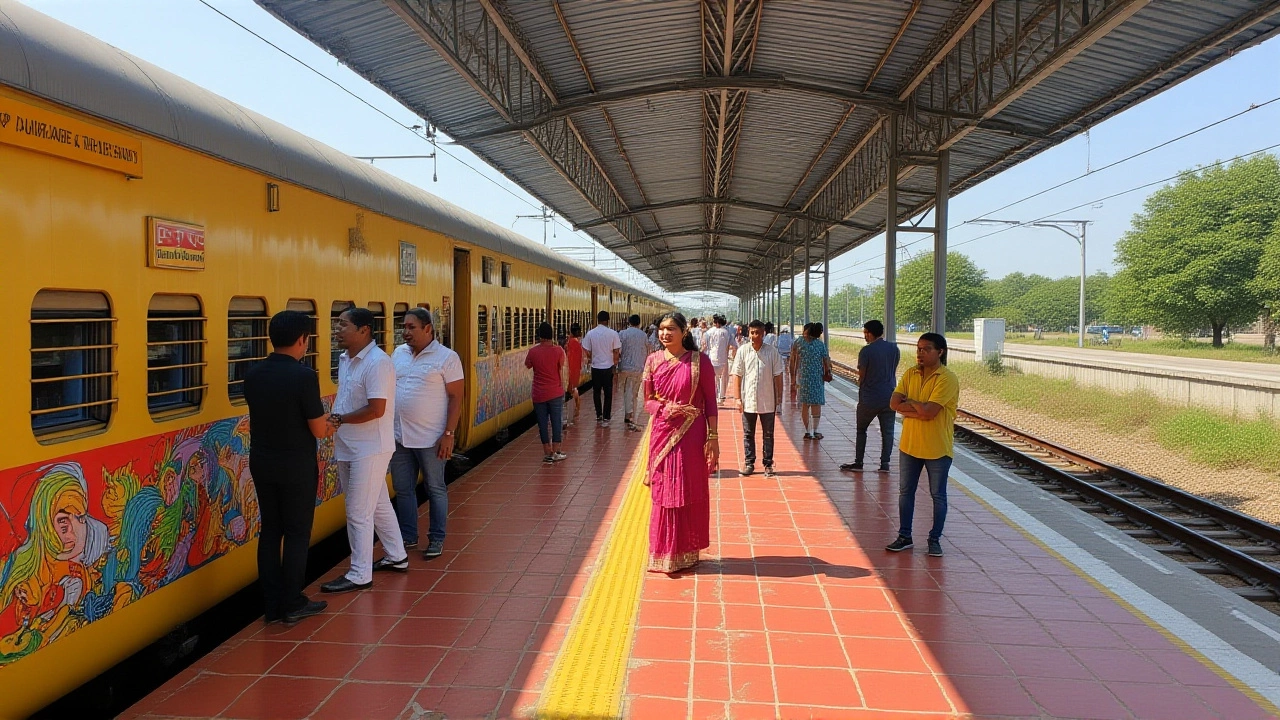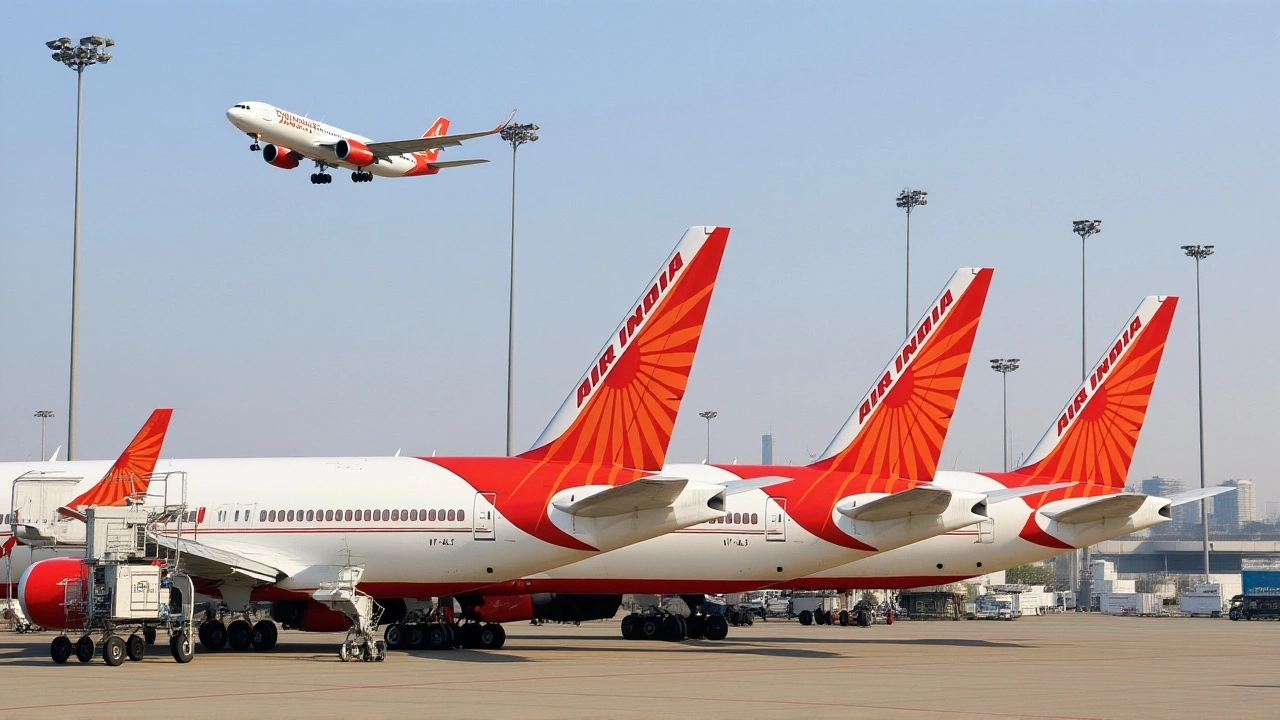On October 7, 2025, heavy monsoon rains turned Delhi’s skies into a torrential downpour, forcing Indira Gandhi International Airport to divert 15 flights in a single afternoon. The chaos wasn’t just inconvenient—it exposed cracks in how India’s busiest air hub handles extreme weather, even after years of infrastructure upgrades. Eight flights landed in Jaipur, five in Lucknow, and two in Chandigarh, stranding thousands and triggering a cascade of missed connections. The India Meteorological Department had warned of orange-level rainfall, but airport ground crews seemed caught off-guard. By 6:26 p.m. IST, IndiGo was already on X, urging travelers to expect delays. Air India had issued a similar alert hours earlier, yet the scale of disruption suggests preparedness still lags behind forecasts.
Weather vs. Infrastructure: Why Delhi Still Struggles
Delhi’s airport has spent billions on modern terminals, automated baggage systems, and expanded runways. But when rain hits, drainage systems choke. Water pools on taxiways. Visibility drops below minimums. And suddenly, even the most advanced tech can’t override physics. This wasn’t an anomaly—it was the third major weather-related disruption this monsoon season. In 2023, a similar downpour grounded 22 flights in one day. Last year, fog caused delays for over 48 hours. The pattern is clear: infrastructure improves, but operational protocols don’t keep pace.“We have the tech,” said a senior air traffic controller who spoke anonymously. “But when the rain hits, we’re still playing catch-up with manual checks and communication delays. It’s not the runway—it’s the human response chain.”
A Bomb Threat in the Age of Social Media
Just one week later, on October 14, 2025, Air India faced a far more chilling disruption. Flight AI119, carrying 239 passengers from Mumbai to New York, was diverted to Delhi after a bomb threat surfaced on X—a tweet flagged by cybersecurity monitors. The threat was later deemed unverified, but the response was immediate. The aircraft landed at Terminal 3, where security teams in full gear swarmed the plane. All passengers disembarked, underwent screening, and were relocated to a holding area. No explosives were found.“This is the new normal,” said retired DGCA inspector Rajiv Mehta. “A single tweet can shut down a transatlantic flight. We’ve got protocols, yes—but they’re reactive, not predictive. What happens when the next threat is AI-generated, personalized, and targeted?”

The Delhi-Port Blair Route: A Lifeline Under Pressure
While the world focused on New York-bound flights, another critical route quietly endured its own strain. Air India operates daily flights between Delhi and Port Blair—flights AI2936 and AI2937—as well as AI2897. These are not luxury routes; they’re lifelines for families, government workers, and tourists heading to the Andaman Islands. When weather hits Delhi, those flights get canceled or delayed. Alternatives like Visakhapatnam or Chennai are theoretically available, but ground handling at those airports isn’t equipped for sudden surges. Passengers report waiting 12–18 hours for rebooking, with no compensation beyond meal vouchers.“It’s not just about weather,” said Priya Sharma, a government employee from Port Blair. “It’s about how the system treats us like afterthoughts. We’re not first-class travelers. We’re just trying to get home.”
A Pattern of Crashes and Cover-Ups
These incidents unfold against a backdrop of deeper institutional trauma. On June 12, 2025, Air India Flight AI171 crashed moments after takeoff from Ahmedabad, killing all 260 on board. The Aircraft Accident Investigation Bureau (AAIB) is still investigating, but it has publicly denounced international media for “spreading unverified reports.” The AAIB’s frustration is telling: while the world speculates about engine failure or pilot error, the real questions—about maintenance logs, regulatory oversight, and crew fatigue—remain buried in bureaucracy.Then there’s the October 5 incident involving Air India Express, where a flight from Hyderabad to Phuket returned to base due to a mid-air technical snag. Passengers got snacks and a new plane. No one died. But the fact that this happened at all—within days of the Delhi diversions and the New York threat—suggests a system under cumulative stress.

What’s Next? The Road to Reform
The Directorate General of Civil Aviation (DGCA) and the Airports Authority of India (AAI) have promised reviews. But promises have been made before. What’s needed isn’t more committees—it’s real-time data integration between weather systems, airline operations, and airport control towers. It’s mandatory emergency drills for diversion airports. It’s transparency with the public, not just after-the-fact press releases.Until then, travelers should assume: if it rains in Delhi, your flight might vanish. If you see a strange tweet about a plane, it might ground one. And if you’re flying to Port Blair? Pack extra patience—and maybe a book.
Frequently Asked Questions
Why weren’t passengers warned earlier about the rain-induced diversions?
Despite the India Meteorological Department issuing orange alerts hours before the storm, airport communication systems failed to push timely alerts to passengers. Many travelers only learned of delays through airline social media posts or app notifications—after they’d already arrived at the airport. The DGCA has since acknowledged this gap and is testing an automated SMS alert system tied to weather API feeds.
How common are security-related flight diversions in India?
Since 2020, India has recorded 17 diversions due to social media threats, with 11 targeting international flights. Only three led to confirmed threats. The majority—like the October 14 AI119 incident—are hoaxes, but protocols require full response regardless. This strains resources and creates public anxiety. Experts argue for a risk-tiered system, where low-probability threats trigger lighter protocols.
Are flights to the Andaman Islands more vulnerable to delays?
Yes. The Delhi-Port Blair route has no direct alternatives with sufficient capacity. Unlike routes to Mumbai or Bengaluru, which have multiple hub options, Port Blair relies on just a handful of daily flights. When Delhi’s weather disrupts operations, the ripple effect is severe. Passengers often wait over 24 hours for rebooking, and airlines rarely offer hotel stays—unlike on international routes.
What happened to the passengers on AI119 after the diversion?
All 239 passengers were screened, provided meals, and housed in the airport’s transit lounge overnight. Air India rebooked them on a replacement flight the next day, departing at 6 a.m. IST. No compensation beyond meal vouchers was offered, though the airline waived change fees. The flight eventually reached New York 14 hours late. The original aircraft underwent a full security inspection and resumed service two days later.
Is Air India’s safety record improving?
Statistically, yes—India’s commercial aviation fatality rate has dropped 40% since 2015. But the June 2025 AI171 crash, which killed 260, remains the deadliest in Indian aviation history. The AAIB’s investigation is ongoing, but preliminary reports suggest possible maintenance lapses and crew fatigue. The airline’s recent operational disruptions suggest systemic issues beyond just accidents—delay culture, communication gaps, and reactive crisis management.
What changes are being proposed to prevent future diversions?
The Ministry of Civil Aviation is drafting new guidelines for weather response, including mandatory real-time dashboards linking IMD alerts to airline operations centers. A pilot program is launching in Delhi and Mumbai to pre-allocate gate space at diversion airports. For security threats, a new triage system is being tested to classify alerts by credibility—potentially reducing unnecessary groundings. But implementation depends on funding and inter-agency cooperation, both historically weak.
